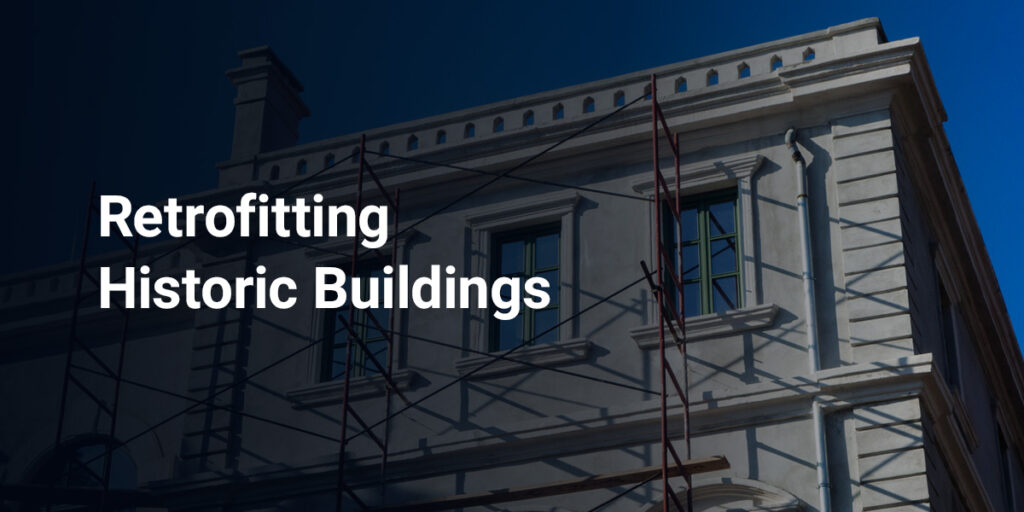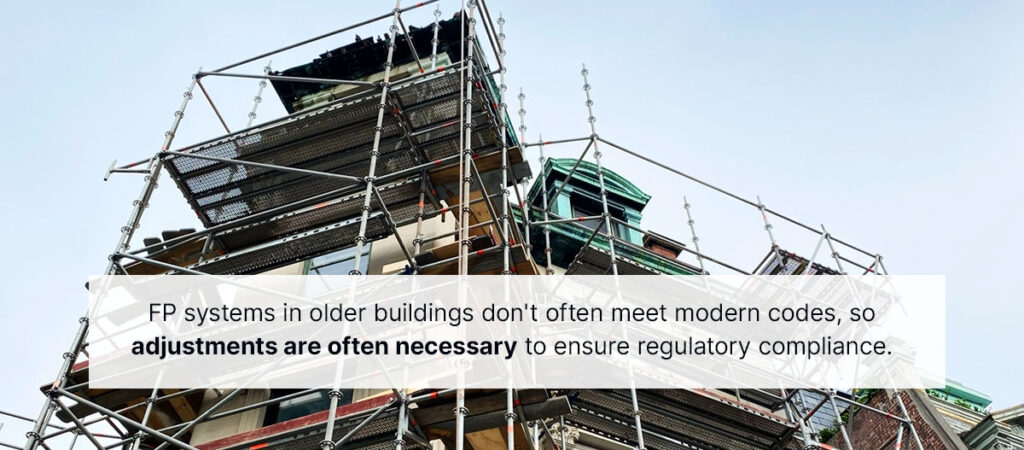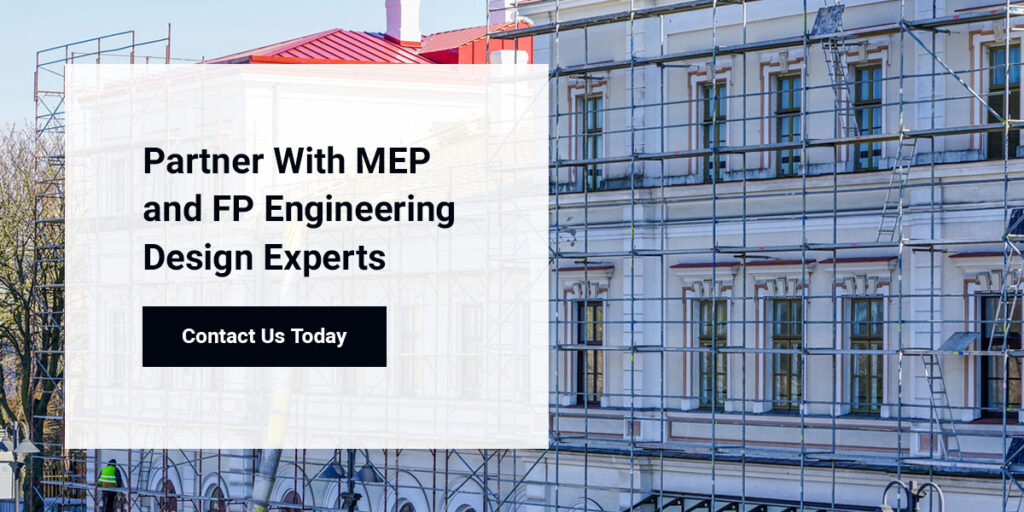


Retrofitting buildings that hold historic significance presents unique challenges and opportunities. Many of these structures are rich in character and cultural value but lack modern amenities that are essential for current building codes and occupant comfort.
For building owners and facility managers, this process involves balancing complex mechanical, electrical, plumbing (MEP) and fire protection (FP) systems with strict preservation guidelines. Those looking to modernize their properties while preserving their cultural significance do so successfully by following best practices.
Before we delve into the top considerations for a retrofit project, it’s important to understand what “retrofitting a building” actually means. Retrofitting a building entails updating a building’s structure, systems and design to improve its performance and efficiency while preserving key historic features that comply with preservation regulations. Improvements often focus on modernizing MEP and FP systems, enhancing insulation and reinforcing the structure.
Restoring historic buildings requires careful planning and attention to detail. Several key considerations will help you balance preservation with modern functionality, which is essential to maintaining the original structure’s integrity while ensuring it meets contemporary energy efficiency and usability standards.
Before any building retrofit work starts, review national and local historic preservation guidelines. Depending on your location and the building’s characteristics, your work may need to follow specific steps and processes, particularly if your historic building is listed on the United States National Register of Historic Places. For example, your local building preservation board may need to approve modifications before they happen. This step can be complex, so it helps to partner with an expert to ensure your project is on track for compliance.
A comprehensive building analysis is essential to understanding the building’s current condition. This process identifies hazardous materials like asbestos or lead paint and reviews the building’s plumbing, electrical, and heating, ventilation and air conditioning (HVAC) systems for efficiency improvements. Assessing the property for opportunities to incorporate geothermal strategies or other renewable energy sources will also contribute to its self-sustainability in the long term.
Retrofitting buildings for sustainability is a key consideration, and many green building rating systems exist. These frameworks offer measurable sustainability benchmarks, which help reduce the building’s carbon footprint while ensuring occupants enjoy modern comforts and energy efficiency. Depending on your property and the guidelines you must follow, following green standards can be a worthwhile pursuit.
Some widely recognized green rating systems include the U.S. Green Building Council’s Leadership in Energy and Environmental Design (LEED) rating system, The Sustainable SITES Initiative certification program, and The Green Building Initiative’s Green Globes certification program.
When retrofitting a historic property, one of the most significant points to keep in mind is preservation. Proactively look for opportunities to salvage and restore the building’s original features whenever possible. For example, retaining and refurbishing distinguishing elements like historic doors, windows and fixtures are crucial. This approach preserves the building’s character and aligns with the sustainability goal of minimizing waste.
Partnering with a group of diverse professionals is essential for project success. For example, sustainability experts with knowledge of historic preservation standards can help ensure your retrofit balances environmental goals with the building’s original architecture. Additionally, local planning departments, preservation offices and historical consultants can offer crucial insight into building codes, zoning laws and tax credits. Altogether, a valuable and impactful historic building restoration requires a team effort.
Most historic buildings feature outdated mechanical systems that fail to meet today’s environmental and operational standards. A retrofit must balance the need to upgrade infrastructure components with preservation efforts:

FP systems in older buildings don’t often meet modern codes, so adjustments are often necessary to ensure regulatory compliance. Examples of FP system changes can include:
A successful retrofit balances the need for improved functionality with energy efficiency and sustainability while maintaining the structure’s historic character. Do you have further questions? Explore some FAQs and their answers:
When sustainability is the primary goal for your retrofitting project, you want to minimize the building’s environmental impact. Retrofitting for sustainability has many benefits, including the impact this investment can have on preserving unique neighborhood characteristics and encouraging community support. It also involves lowering carbon emissions, promoting the use of friendly materials and reducing energy consumption.
Sustainable retrofits often involve installing renewable energy systems, upgrading to energy-efficient HVAC and lighting systems, and improving water efficiency. They also include preserving as much of the existing materials as possible to reduce waste and minimize the use of mechanical systems.
Retrofitting buildings for energy efficiency involves reducing the amount of energy a building uses to perform daily functions like cooling, heating, lighting and ventilation. It typically involves upgrading insulation, replacing outdated HVAC systems, installing energy-efficient windows and optimizing electrical systems for reduced consumption.
A plan to retrofit historic buildings requires balancing modern, energy-efficient systems with the protection of historical integrity. Expert guidance, thoughtful planning and a commitment to innovation are key to successfully transforming these buildings into sustainable assets.
The team of engineers at CSI Engineering has ample experience in retrofitting project design. From the Nantucket Atheneum to the Old Ship Church, Elizabeth Perkins House and Prescott Building, we continuously demonstrate attention to detail, commitment to deadlines and respect for historic spaces.
At CSI Engineering, we specialize in delivering tailored MEP and FP design solutions that ensure your historic building meets modern performance standards while maintaining its historical value. Our team also offers architect coordination services, with a track record in historical building services that spans over 25 years. We can also assist with LEED consulting, heating and cooling, and geothermal needs.
We invite you to explore our portfolio and contact us today for a consultation on your next project.
